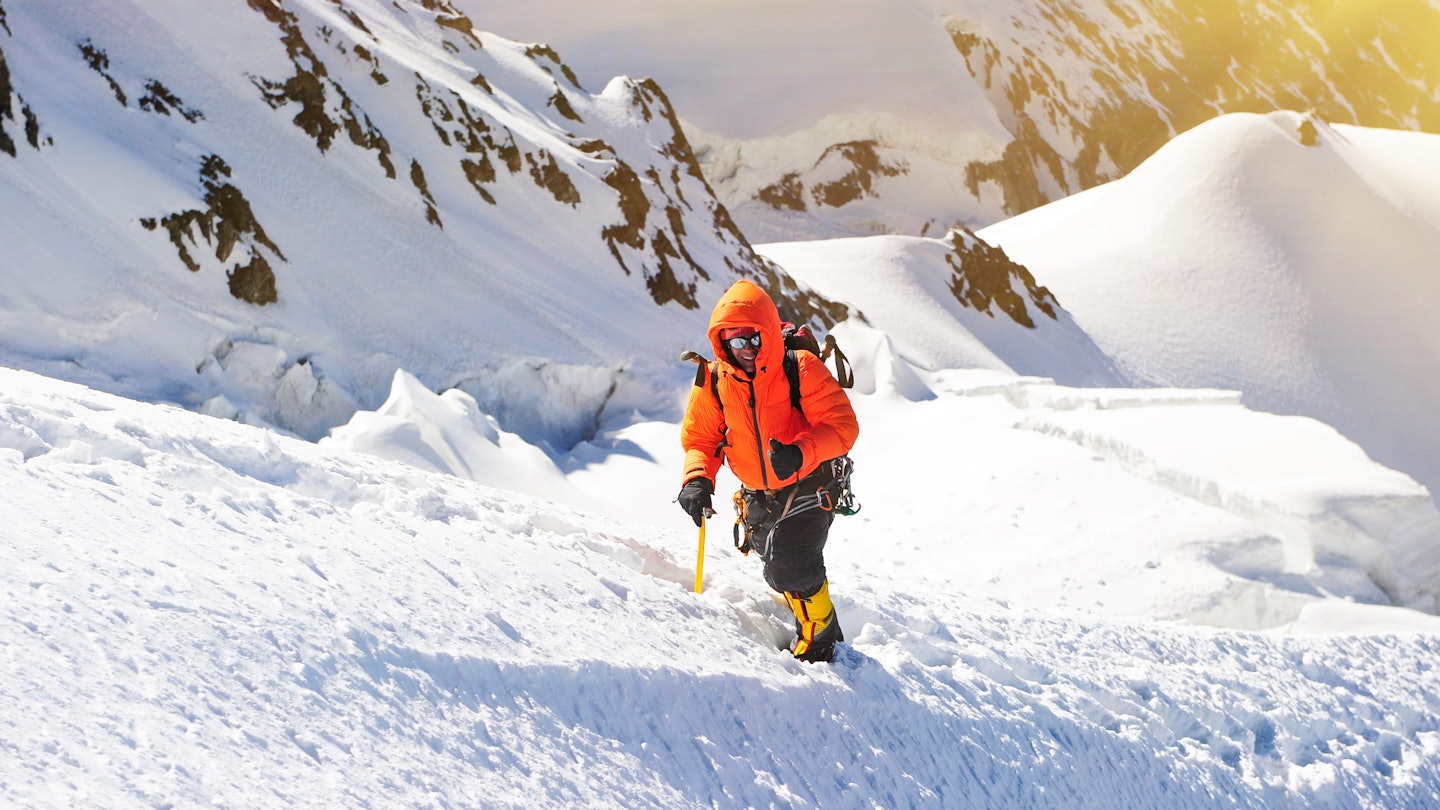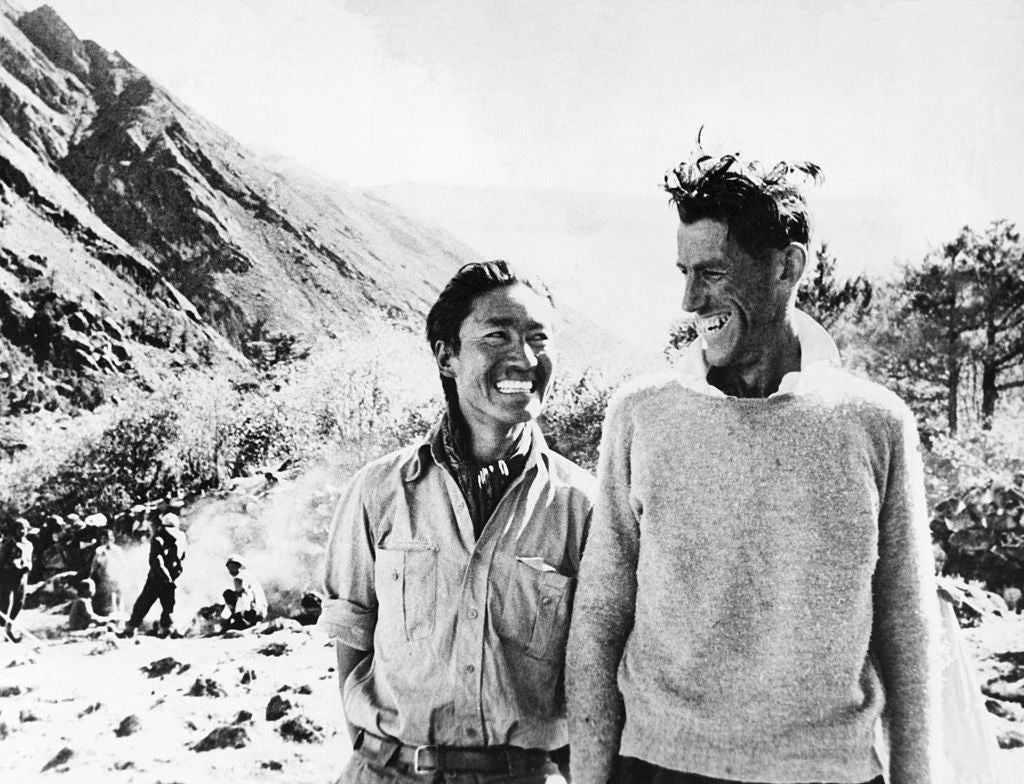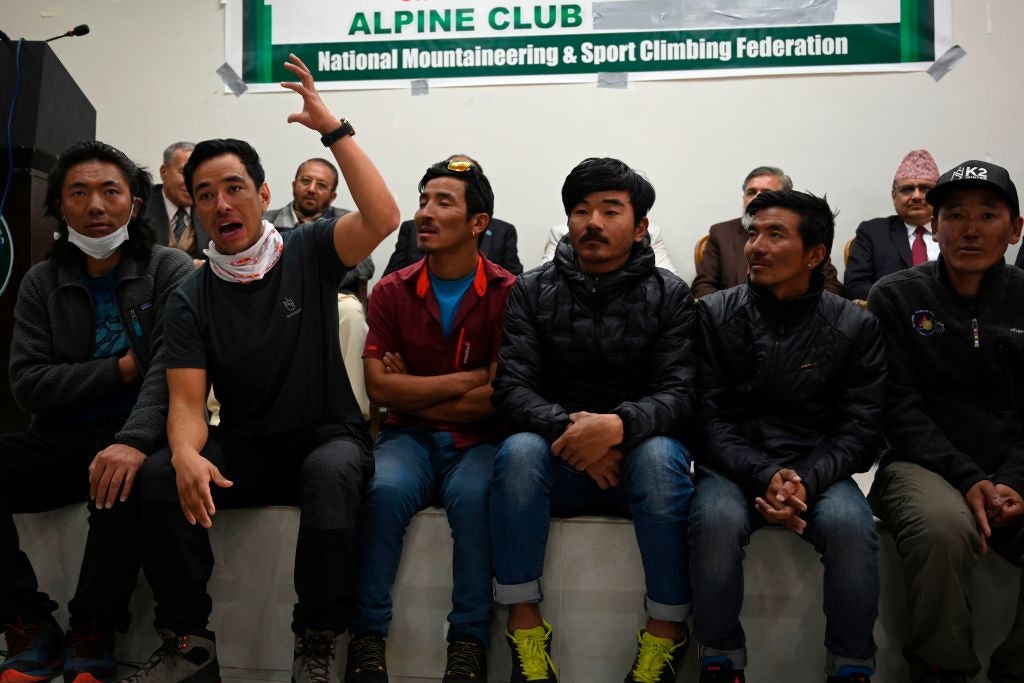
The 30 best countries, cities and regions to visit in 2025

"The mountains put things in perspective and make you realise how small you are." ©Fahad Mohammed/500px
Nirmal Purja is a man of firsts. Having climbed all 14 of the world’s peaks above 8000m in one season, earlier this year his all-Nepali team reached the summit of K2 in a line, placing no climber ahead of the rest. The 37-year-old is leading the way for South Asian climbers, and leaving the notion of Sherpas ‘assisting’ western climbers firmly in the past.
When Nirmal ‘Nims’ Purja climbed his first Himalayan peak in 2012, it was almost by accident. On a trek to Everest Base Camp, the former Gurkha soldier caught sight of the rocky spire of Ama Dablam, rising dramatically above the trail from Namche Bazar, and it was a light bulb moment.
"I just wanted to go on a trek to see Everest,"says Nims. "But as we reached the point where you first spot Ama Dablam, I asked my guide, can I climb that, and he laughed and said no way. That was the beginning."

This first ascent was a modest 6119m, but the man who would later claim some of the world’s most coveted mountaineering records was hooked. In 2014, he bagged Dhaulagiri, his first 8000m peak. Two years later, Nims stood at the highest point on earth – the 8848m summit of Mt Everest (Sagarmatha) – for the first time.
By 2018, Nims had been honored by Queen Elizabeth for services to mountaineering after leading an all-Gurkha expedition to the top of Everest to mark two centuries of Gurkha service to the British Army. To the greater world beyond Nepal’s borders, however, he was still something of a climbing outsider.
In 2019, the Nepali climber embarked on his most ambitious expedition yet, Project Possible, an audacious attempt to climb all 14 peaks over 8000m – the ‘eight-thousanders’, scattered across Nepal, Pakistan, India and Tibet – in a single season. But despite an already impressive climbing record, he faced considerable scepticism.

"I was massively disadvantaged when I started because nobody knew about me," he recalls. "I’d already climbed three eight-thousanders by the time I left the special forces, but I had no recognition, no following. People were like, who the hell is this guy? Does he even have a clue how to climb an 8000m peak?"
"But I believe that if you want to achieve something important you need a purpose that’s bigger than yourself. When I climbed the eight-thousanders in one season, I wasn’t really doing it for ego. I wanted to let the world see what was possible. If you believe in what you are doing, that’s where a lot of the energy comes from."

Nims reached the summit of Shishapangma (8013m) in Tibet on 29 October 2019, just six months after beginning his ambitious endeavour, beating the previous world record by a staggering seven years.
Nirmal Purja was born in Nepal in 1983, but he was not born to climbing. He grew up in Myagdi district in the green foothills of the Himalaya, far from the high-altitude valleys of the Sherpas, the Nepali community most strongly associated with climbing (to such a degree that the word ‘sherpa’ is often used, incorrectly, as a job title for the hundreds of guides, porters and route-setters who lead expeditions through the Himalaya every season).

Like many young men from the Magar ethnic group, Nims signed up as a Gurkha soldier at the age of 18, following in the footsteps of his soldier father and brothers. After six years in the British army, he became the first Gurkha to be recruited to the Special Boat Service, the elite navy equivalent to the SAS, with special expertise in cold-weather warfare.
"I only started climbing when I was 30 years old while I was still in the British forces, and I never thought I would climb a mountain," he says, still sounding a little incredulous at his own successes. "After serving in the special forces for ten years, traveling the world, I started to feel invincible, but the mountains put things in perspective and make you realize how small you are."
Traditionally, the top levels of Himalayan climbing have been seen as the preserve of top flight international climbers. In television reports, expeditions are ‘supported’ by teams of local porters, guides and ice doctors, but ‘led’ by mountaineering legends such as Reinhold Messner and Dave Hahn. On newspaper front pages, Everest was conquered by Hillary and Tenzing, not Tenzing and Hillary.

If you place climbers in order of the most Himalayan ascents, a very different picture emerges. The top Everest summiteer of all time is not Hahn or Hillary but veteran guide Kami Rita Sherpa, who has reached the highest point on the roof of the world a staggering 24 times. Indeed, the first non-Nepali to appear in the list – Dave Hahn – comes in at number 11, with a modest 15 ascents.
"What makes the international news is what happens on the big mountains," says Billi Bierling at the Himalayan Database, the archive founded by American journalist Elizabeth Hawley to record Himalayan ascents. "But within the Himalayan climbing community, young Sherpa climbers have been recognized for some time. There are now over 50 International Federation of Mountain Guide Associations-qualified Nepali mountain guides and more and more Nepali operators are running expeditions."
Mountaineering is no longer just a way for Sherpas to earn their bread and butter. The younger generation of Nepali climbers are proud of their achievements and passionate about their mountains and they are keen on opening new routes and climbing unclimbed peaks to show the world what they are capable of, without being in the shadow of ‘western clients.’

It’s a recognition that has been a long time coming. "Coming from a Nepali background, it’s been tough to achieve a similar level of recognition to international climbers," admits Nims. "We have always been there, even on the first Himalayan expeditions, but the media never gave us a voice. We were in the shadows, and nobody talked about us."
"But now, the younger generation of Nepali climbers is achieving so much. The internet is making a big difference. We can reach people directly to tell our stories. The media is starting to take notice of climbers from Nepal, and Pakistan, and India, and China. We’re not in the shadows anymore."
It was a point Nims proved in style during the first winter ascent of K2 – the world’s second-highest mountain and the last eight-thousander to be conquered in winter. On January 16, 2021, his all-Nepali team advanced to the summit in a line, placing no climber ahead of the rest, while singing the Nepali national anthem.

Nims was the only member of the group to reach the summit without supplemental oxygen, which he credits to determination as well as ability. "I seem to have a genetic advantage at dealing with altitude," he admits. "But my training also helped. The British special forces has the hardest training regime in the world, and I was trained by the best. When you combine that with physical ability and hard work, it’s possible to achieve anything."
The idea of the mighty Western climber is very much a media myth; you’ll find little resentment of the growing recognition for climbers from South Asia from within the mountaineering community. "It’s sad that most of the mountaineering firsts in Nepal are seen to ‘belong’ to climbers from other nations," says Jake Meyer, who in 2005 became the youngest Briton to summit Everest, at the age of 21. "In fact, most of these feats were built on the sweat (and often the lives) of Nepali guides and porters."

"Sherpas have often been seen as a homogenous human machine dragging rich tourists to the tops of mountains. The closer people get to mountaineering communities, the more they understand and recognize the impact that these mighty yet humble titans of the Himalayas have had on so much of climbing history. January’s winter summit of K2 proved once and for all that Nepal is now creating a generation of climbers who climb for the challenge and joy, not just for the pay-check."
The hope is that the next generation of South Asian climbers will be inspired by what climbers such as Nims and fellow expedition member Mingma Sherpa – who became the youngest person to climb all 14 eight-thousanders in 2019 – have achieved. "People from the communities around the Himalaya can look at us and say: he was also born in Nepal, if he can do that, we can do that. I hope someone will break my records. That’s a positive thing. The future is limitless."
You may also like:
The record-breaking Nepali mountaineer cleaning up the Himalaya
Everest’s deadly season: overcrowding or summit fever?
How to trek to Everest Base Camp
Plan with a local
